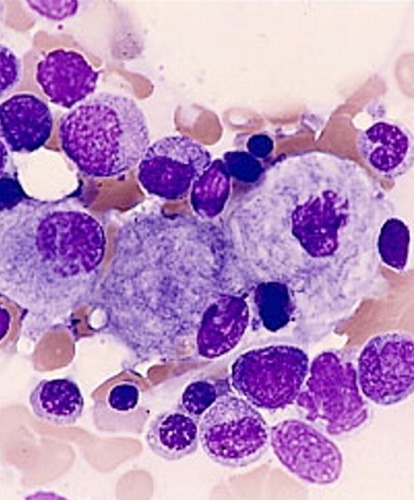Disease Education Information
Early and Proactive Treatment Makes a Difference
Acromegaly is a chronic rare disease associated with excess growth hormone secretion.1 It causes overgrowth of body tissues and, if untreated, can lead to secondary problems such as hypertension and heart failure.1 Failure to receive adequate medical treatment for this condition can reduce life expectancy by 10 years.2
- What is Acromegaly?
Acromegaly is caused by chronic, excess growth hormone secretion, generally caused by a noncancerous tumor in the pituitary gland (a ‘pituitary adenoma’).1 The pituitary is the “master gland” of the body, which controls growth, metabolism, and reproductive activity and sits in the sella turcica at the base of the brain.3
Patients with this condition experience an increase in the size of their hands and feet, broadening of their fingers, and coarsening and broadening of their facial features.1 They may also experience headaches and can often suffer from diabetes, hypertension, arthritis and heart failure.1
- Who Gets Acromegaly and How?
Acromegaly is rare, with only three or four patients per million individuals diagnosed with the condition each year.4 Acromegaly develops gradually and typically is not diagnosed until several years—often, as many as seven—after excess growth hormone secretion has begun.4
This condition usually occurs in patients without a family history of acromegaly.5 One should suspect the condition if the size of the patient’s shoes, rings, and gloves increase or if facial features start to coarsen and spaces between the upper front teeth widen.6
- What are the Symptoms of Acromegaly?
The main symptoms are caused by abnormally high growth hormone and insulin-like growth factor-I (IGF-I) levels, and some are caused by the tumor itself. They include the following:1
- Broadening of the nose, lips, ears, and forehead; enlarged tongue and increased spacing between front teeth
- Headaches
- Hoarse voice; sleep apnea and loud snoring
- Growth in hands and feet that requires larger shoes, rings, and gloves
- Appearance of skin tags and excessive sweating
- Arthritis of large joints and joint pain Polyps in the colon, thyroid, and uterus
- Hypertension and heart failure
- Diabetes mellitus. Diabetes may be caused by or worsened by acromegaly, and diabetic patients with the condition may require higher doses of anti-diabetes medicines
When growth hormone levels are not controlled, and diabetes and heart disease are present, the patient’s life expectancy may be reduced by as much as 10 years.2
- How is Acromegaly Diagnosed?
Because excess growth hormone levels stimulate increased production of IGF-I, acromegaly may be diagnosed either by measuring levels of IGF-I or by measuring growth hormone levels directly. IGF-I measurement is the easier to detect because it only requires a simple blood test and samples may be taken at any time of the day. Direct growth hormone measurement is more involved since it requires several measurements, both before and after the patient has ingested a glucose solution.1
Once excessive growth hormone and IGF-I levels have been confirmed, magnetic resonance imaging (MRI) is used to examine the brain and determine whether a pituitary adenoma is present.1
- Can Acromegaly be Treated?
In treating acromegaly, the goal is to restore growth hormone and IGF-I in the blood to normal levels. If treatment succeeds, the soft tissue overgrowth will improve over several months and the risk of decreased life expectancy will return to where it was before the condition was diagnosed.1
Surgical removal of the tumor is usually the first choice, but medications will be needed if surgery does not cure the condition, which is common. Potential treatments include synthetic analogues of the hormone somatostatin, dopamine agonists, and growth hormone antagonists. In some cases, radiation therapy may be required.1
Acromegaly Resources

Area of Focus: Rare Disease
Acromegaly is a focus of our Rare Disease Therapeutic Area.
Visit Our Rare Disease Site DetailsClinical Trials
We proudly partner with thousands of study sites and tens of thousands of trial participants around the world. It's these clinical trials that lead to life-changing medicines.
Go to Pfizer Clinical Trials Site DetailsReferences
1. National Organization for Rare Disorders. Acromegaly. https://rarediseases.org/rare-diseases/acromegaly/. Accessed February 10, 2020.
2. Găloiu S, Poiană C. Current Therapies and Mortality in Acromegaly. J Med Life. 2015;8(4):411-415.
3. American Association of Neurological Surgeons. Pituitary Gland and Pituitary Tumors. https://www.aans.org/en/Patients/Neurosurgical-Conditions-and-Treatments/Pituitary-Gland-and-Pituitary-Tumors. Accessed February 10, 2020.
4. NIH National Institute of Diabetes and Digestive and Kidney Diseases. Acromegaly. https://www.niddk.nih.gov/health-information/endocrine-diseases/acromegaly. Accessed February 10, 2020.
5. Gadelha M, Kasuki L, et al. The Genetic Background of Acromegaly. Pituitary. 2017;20(1):10-21.
6. Acromunity. Acromegaly Symptoms and Signs. https://www.acromunity.com/about-acromegaly/learn-about-acromegaly/acromegaly-symptoms-and-signs/. Accessed February 10, 2020.

